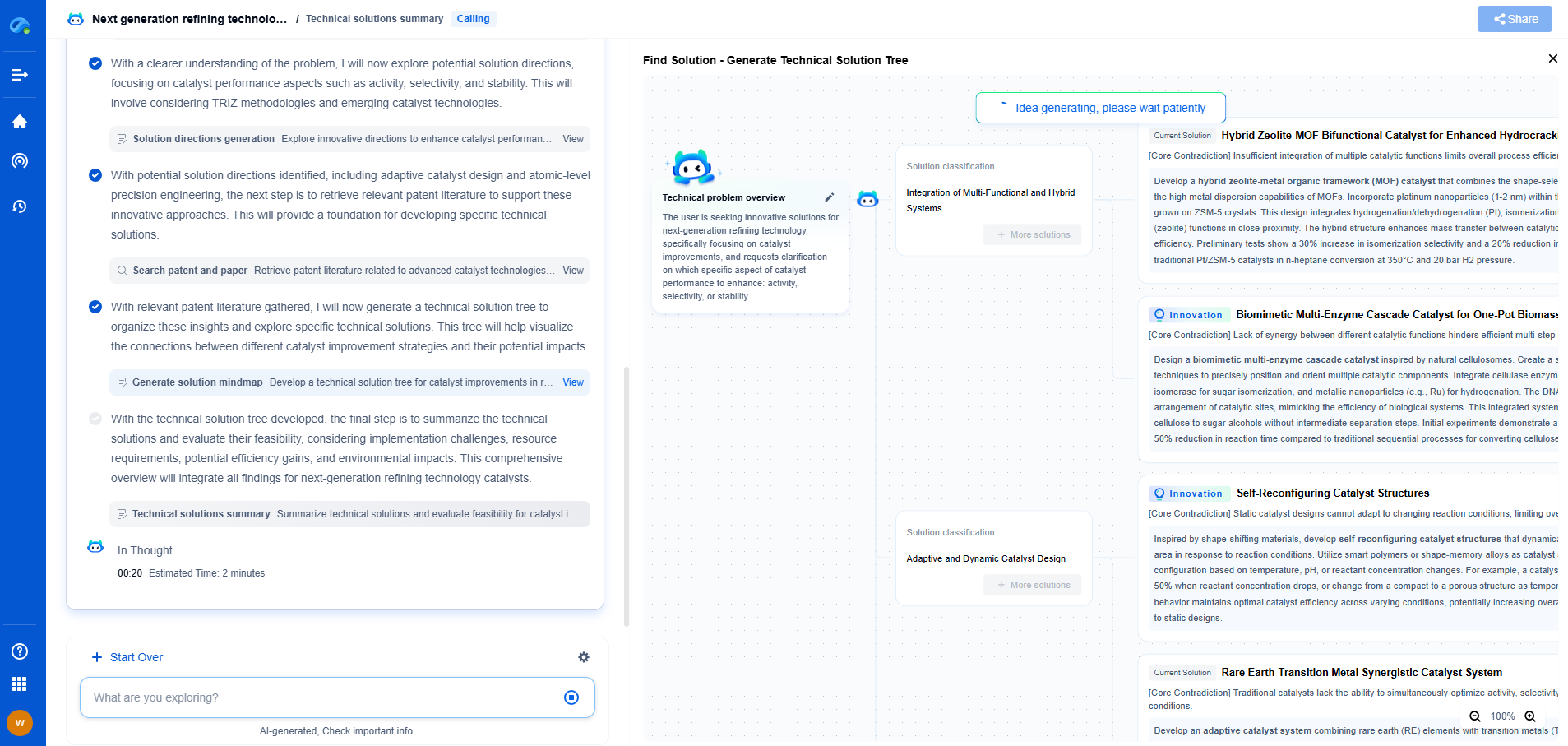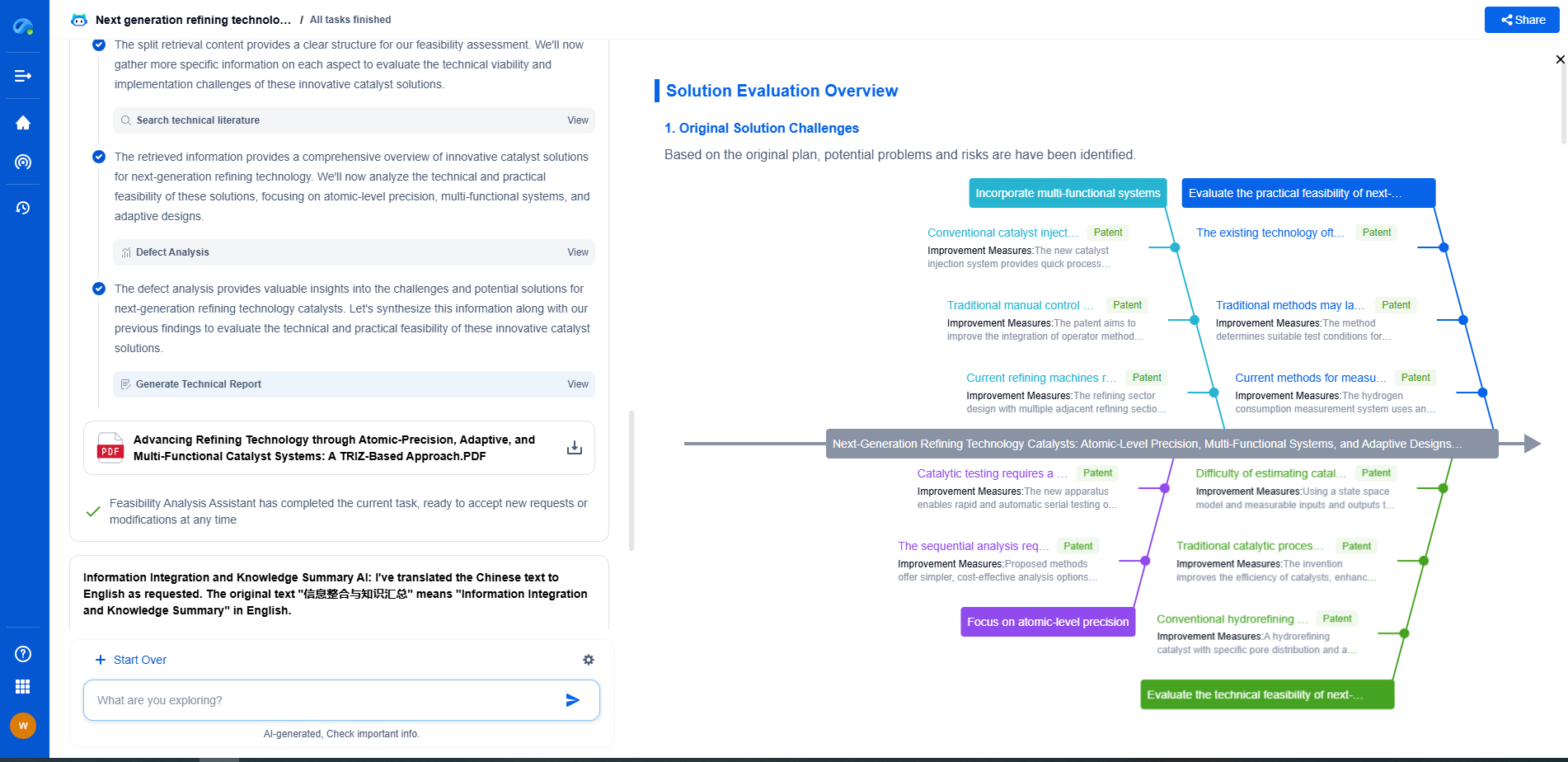What Happens If a Pipeline Is Out of Compliance?
JUN 20, 2025 |
Pipeline compliance refers to adhering to regulations that govern the construction, operation, maintenance, and decommissioning of pipelines. These regulations are designed to ensure safety, environmental protection, and efficient service delivery. Pipelines that are out of compliance can face serious repercussions, affecting not only the pipeline operators but also the communities and environments they serve.
Legal Consequences
One of the most immediate impacts of non-compliance is the legal ramifications. Regulatory bodies such as the Pipeline and Hazardous Materials Safety Administration (PHMSA) in the United States enforce strict guidelines. Failure to comply can lead to hefty fines, legal actions, or even the shutdown of operations. Companies may face lawsuits from affected parties, including individuals, communities, and environmental organizations. Legal battles can be lengthy and costly, damaging the company’s reputation and financial standing.
Safety Risks
Safety is a paramount concern in pipeline operations. Out-of-compliance pipelines can pose significant safety risks, potentially leading to accidents, spills, or explosions. These incidents can cause harm to workers, local communities, and wildlife. Safety violations can stem from various issues such as inadequate maintenance, improper materials, or failure to monitor and detect leaks. Ensuring compliance means maintaining rigorous safety standards, minimizing risks, and protecting lives and property.
Environmental Impact
Pipelines are often criticized for their environmental footprint. When pipelines fail to meet compliance standards, the risk of environmental damage increases considerably. An oil or gas spill can lead to soil contamination, water pollution, and harm to aquatic and terrestrial ecosystems. Non-compliance with environmental regulations can also contribute to air pollution if the pipeline leaks hazardous gases. Beyond immediate damage, long-term environmental degradation can have lasting effects on biodiversity and climate change efforts.
Operational Disruptions
Non-compliance can disrupt pipeline operations, leading to downtime and loss of productivity. Regulatory bodies may demand immediate corrective actions or temporarily halt operations until standards are met. This disruption not only affects the pipeline company but can also impact businesses and consumers dependent on the pipeline’s products. Supply chain disruptions may lead to shortages or increased prices, underscoring the importance of maintaining compliance for continuous operation.
Financial Repercussions
Financial implications of non-compliance are substantial. Beyond fines and legal costs, companies may face increased insurance premiums or lose coverage altogether. The cost of repairing damage, implementing corrective measures, or investing in new technologies to meet compliance standards can be significant. Additionally, loss of customer trust and damage to brand reputation can lead to a decrease in market value and future business opportunities.
Preventive Measures
To avoid the consequences of non-compliance, companies need to implement robust preventive measures. Regular audits and inspections are critical in identifying and addressing potential compliance issues before they escalate. Investing in advanced monitoring technology can enhance leak detection and maintain integrity. Training programs for employees ensure they are well-versed in safety and compliance requirements. Finally, fostering a culture of responsibility and transparency can help maintain high compliance standards and minimize risks.
Conclusion
The consequences of a pipeline being out of compliance are far-reaching, with potential legal, safety, environmental, operational, and financial impacts. It is crucial for pipeline operators to prioritize compliance through proactive measures and continuous improvement. By adhering to regulations and standards, companies can safeguard their operations, protect communities and environments, and ensure sustainable and efficient pipeline management.
Transform the Way You Innovate in Pipeline Technology—with AI-Powered Intelligence
From corrosion-resistant materials to smart monitoring systems and advanced flow control mechanisms, the pipeline industry is undergoing rapid technological transformation. Yet keeping up with evolving engineering solutions, regulatory landscapes, and competitive patents can be a major bottleneck for R&D and IP teams.
Patsnap Eureka is your AI-powered research companion—built specifically for professionals in high-tech and infrastructure domains like pipeline technology. Whether you're designing high-pressure transport systems, assessing trenchless installation innovations, or safeguarding proprietary flow assurance solutions, Eureka provides real-time insights into global patent trends, emerging technologies, and R&D intelligence—all in one intuitive interface.
Empower your team to innovate faster, reduce technical blind spots, and stay ahead of industry shifts. Discover Patsnap Eureka today and bring clarity and confidence to your pipeline technology decisions.
- R&D
- Intellectual Property
- Life Sciences
- Materials
- Tech Scout
- Unparalleled Data Quality
- Higher Quality Content
- 60% Fewer Hallucinations
Browse by: Latest US Patents, China's latest patents, Technical Efficacy Thesaurus, Application Domain, Technology Topic, Popular Technical Reports.
© 2025 PatSnap. All rights reserved.Legal|Privacy policy|Modern Slavery Act Transparency Statement|Sitemap|About US| Contact US: help@patsnap.com

